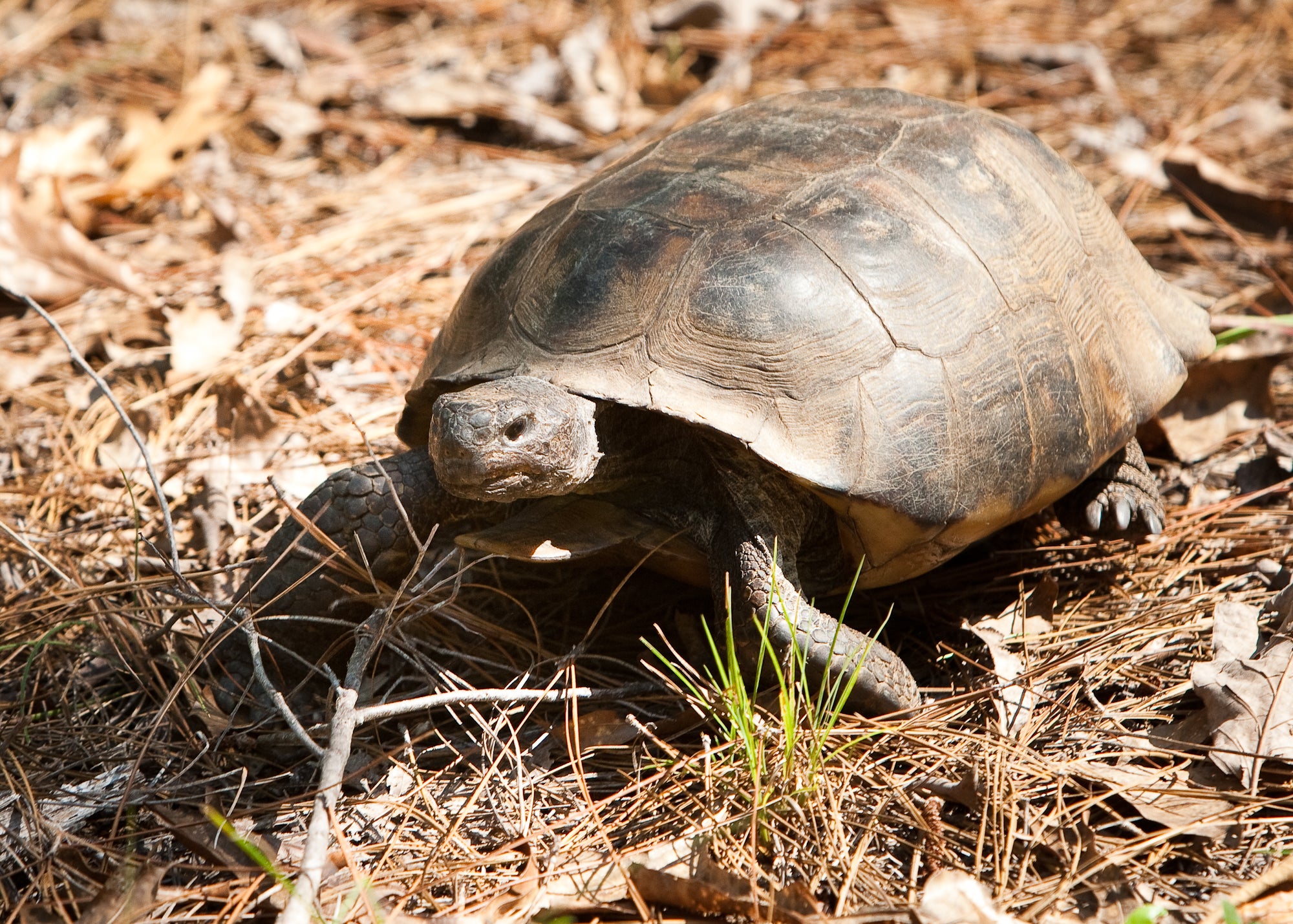On October 11, 2022, the U.S. Fish and Wildlife Service (USFWS) announced the decision to withdraw the petition to list the eastern portion of the gopher tortoise range under the endangered species act after a species status assessment indicated gopher tortoise populations in the eastern portion of its range in Florida, Georgia, South Carolina and most of Alabama are robust.
However, gopher tortoise populations in the western portion of its range in Alabama are still federally listed as threatened. The western portion of its range in Alabama includes populations west of the Mobile and Tombigbee rivers. The gopher tortoise’s western range also includes southern Mississippi and eastern Louisiana where it is also federally listed as threatened. It is important to remember the gopher tortoise continues to be protected by state regulations and is listed as a priority species of greatest conservation need throughout its range in Alabama.
“The partnerships between state and federal agencies, local and nongovernmental organizations and landowners have been crucial in developing a better understanding of gopher tortoise populations and helping to enhance those populations,” said Chris Blankenship, Commissioner of the Alabama Department of Conservation and Natural Resources (ADCNR). “We are grateful to the U.S. Fish and Wildlife Service and our other partners for making gopher tortoise conservation a priority.”
The gopher tortoise plays an integral role in the longleaf pine forests of the Southeast. As a keystone species, more than 350 other species depend on its burrows for shelter. These burrows can go as deep as 12 feet, extend more than 60 feet, and provide protection from predators, extreme weather, and the prescribed fires necessary for the habitat to thrive. Actively managing longleaf pine forests not only benefits gopher tortoises, but it also benefits a variety of other wildlife, including the Eastern indigo snake, red-cockaded woodpecker, wild turkey and white-tailed deer.
“Alabama’s commitment to restoring longleaf habitat and enhancing its gopher tortoise populations has been an important factor in the stabilization of gopher tortoise numbers in the eastern part of its range in the state,” said Leopoldo Miranda-Castro, USFWS Southeastern Regional Director. “We will continue to work with our partners in Alabama and throughout the gopher tortoise’s range to conserve this important keystone species.”
Historically, longleaf pine forest covered millions of acres from Texas to Virginia. Habitat fragmentation, degradation, and modification are the primary threats to animals that depend upon longleaf pine habitat. For decades, the USFWS and the six southeastern states in the gopher tortoise’s range have worked to restore longleaf pine forests and enhance gopher tortoise populations.
“The decision not to list the gopher tortoise is good news for Alabama and the other states within its range,” said Chuck Sykes, Director of ADCNR’s Wildlife and Freshwater Fisheries Division. “There are several factors that can make managing for gopher tortoise different in each state. This allows state wildlife agencies to determine the best conservation approach for their individual states, including the development of public-private partnerships that have been effective at enhancing gopher tortoise populations in south Alabama.”
Earlier this year, gopher tortoise conservation in Alabama received a boost when representatives from ADCNR, USFWS, Eckerd College and the Birmingham Zoo released 98 young tortoises into the Geneva State Forest Wildlife Management Area (WMA) in Covington County. Prior to the release, tortoise eggs were collected from nests at the WMA and sent to Eckerd College in St. Petersburg, Florida, to hatch. The hatchlings were then raised at Eckerd College and the Birmingham Zoo for up to two years to increase their chances of survival in the wild – a process called head-starting. These tortoises will be monitored over the next several years to determine their survival rates and movement patterns.
For more information about the USFWS gopher tortoise announcement, click here.
ADCNR promotes wise stewardship, management and enjoyment of Alabama’s natural resources through four divisions: Marine Resources, State Lands, State Parks, and Wildlife and Freshwater Fisheries. Learn more at outdooralabama.com.
###






